This article is written by Prity. This article provides a detailed analysis of the landmark decision of T.M.A. Pai Foundation & Ors. vs. State of Karnataka & Ors. (2002). The article also goes through the facts of the case, issues in the case, arguments by the petitioners and respondents, the rationale behind the judgement, and a critical analysis of the case. This article ends with a discussion of the present scenario after the T.M.A.Pai Foundation case.
Table of Contents
Introduction
“Education is a fundamental human right and essential for the exercise of all other human rights. It promotes individual freedom and empowerment and yields important development benefits.”
— UNESCO
The concept of education is not new in India. It is traced back to the Vedic period, i.e., around 5000 BC, where the Guru Shishya tradition was prevalent. Shishya (the student) went to Gurukul (the school) to learn Vedas, holy scriptures, religion, philosophy, medicine, arithmetic, spirituality, and logic from the gurus. During this period, education was solely confined to the priestly classes, i.e., mostly Brahmins, whereas the lower castes, particularly shudras, were barred from receiving education.
Even during the Buddha and mediaeval periods, education was out of the reach of common people. After the Mughals, Britishers came to India and started their education system, known as the “modern education system,” under which they gave importance to the English language. The British Government’s main goal in providing education was to appoint an Indian as a clerk or lower-grade post in the East India Company. That was a cheaper option than to appoint an Englishman from England. The neglect of education for Indians was visible at that time.
The Wood’s Education Dispatch acknowledged the neglect of the British Government to education. They thought of education as a charity, not as a duty to provide. But, gradually, the education movement was started in India by some “social reformers” or scholars, which the British Government also began to accept. From there, the free and compulsory primary education system commenced in India, yet education was out of the reach of common people.
India was invaded by different rulers, such as Afghani, Mughal, Portuguese, Dutch, and British, in different periods. These invasions gave birth to unlike communities like Muslim, Sikh, Jain, Christian, Parsi, and Anglo-Indians, who are known as minorities in India and Hindu as a majority on the basis of population.
When India was free from the fetters of colonialism in 1947, at the time of drafting the Constitution of India, the minority communities were scared about their security and the abolishment of their unique and peculiar religion, language, and culture. Therefore, they demanded a separate electoral body for themselves, which was rejected by the constituent assembly. However, the makers of the Indian constitution provided certain fundamental rights, such as Articles 14 to 18, Articles 25 to 30, and Directive Principles such as Articles 36 to 51 and Article 350, to protect the interests of and preserve or flourish the religious, cultural, and linguistic values or identities of minorities.
However, in this article, the T.M.A. Pai Foundation & Ors. vs. State of Karnataka & Ors. (2002) (hereinafter referred to as the “T.M.A. Pai Foundation case”) is analysed, and this case is connected with minority educational institutions; therefore, only Articles 15(4), 15(5), 19(1)(g), 26, 28, 29, and 30 will be deliberated upon. The article provides a critical analysis of the T.M.A. Pai Foundation case and explores the broader implications of this landmark judgement on our constitution and society.
Details of the case
- Name of the case: T.M.A.Pai Foundation & Ors. vs. State of Karnataka & Ors.
- Citation: AIR 2003 SC 355; (2002) 8 SCC 481; [2002] Supp 3 SCR 587
- Case type: Writ Petition (Civil) 317 of 1993
- Bench: The Bench consists of the then Chief Justice of India, Justice B.N. Kirpal, Justice G.B. Pattanaik, Justice V.N. Khare, Justice S. Rajendra Babu, Justice S.S.M. Quadri, Justice Ruma Pal, Justice S.N. Variava, Justice K.G. Balakrishnan, Justice P.V. Reddi, Justice Ashok Bhan, and Justice Arijit Pasayat.
- Name of the petitioners: T.M.A.Pai Foundation & Ors.
- Name of the respondents: State of Karnataka & Ors.
- Date of judgement: 31.10.2002
- Name of the court: The Supreme Court of India
- Laws involved: Article 15(4), Article 19(1)(g), Article 19(6), Article 26, Article 28, Article 29(1), Article 29(2), Article 30(1), Article 30(2), Article 21, Article 21A, Article 41, Article 45, and Article 46 of the Constitution of India.
Facts of the T.M.A. Pai Foundation & Ors vs. State of Karnataka & Ors (2002)
The unresolved conflict of issues or new conflict of issues related to Minority Educational Institutions (MEIs) before the equal strength bench or shorter strength bench is often referred to as the larger constitutional bench to resolve all conflicts of the issues. The T.M.A. Pai Foundation case is an example of this. This was the writ petition decided by the eleven-judge Bench of the Supreme Court by a majority of 6:5 on 31st October 2003. This was the second-largest constitutional bench judgement of the Supreme Court after Kesavananda Bharati Sripadagalvaru vs. State of Kerala and Anr (1973).

The facts of the case are as follows:
Dr. T.M.A. Pai was a renowned physician, banker, philanthropist, educationist, and Konkani language speaker. He has established internationally famous Manipal educational institutions. He had a passion for social service, so he founded a society called the “Academy of General Education” (hereinafter mentioned as “Academy”) in 1942 in Manipal, which came under the State of Madras then, and after the reorganisation of state institutions, came under the new State of Karnataka. The Academy was registered as a society under the Societies Registration Act, 1860.
Under this academy, with public support and cooperation, he formed various educational institutions such as high schools, arts, science, and commerce colleges, a medical college, and engineering colleges. He was least interested in the government’s funding for his benevolent work for society.
Manipal Academy of Higher Education (hereinafter referred to as the “MAHE”) was also founded under the Academy. On 30th May 1957, the Manipal Engineering Trust was formed, inter alia, to establish the Manipal Institute of Technology (MIT), the second petitioner in the present case.
T.M.A. Pai died on 29th May 1979. In his memory, a Konkani linguistic minority trust, the Dr. T.M.A. Pai Foundation was established in 1981 and registered under the Trust Act, 1882, to support and promote the advancement of educational activities and the Konkani language and culture of Konkani linguistic minorities. Later on, on 8th July 1983, the trustees of the engineering college, by another deed of declaration of trust, transferred the ownership of the engineering college (MIT) to the Dr. T. M. A. Pai Foundation Trust, the first petitioner in the present case. So, now, the first petitioner is Dr. T. M. A. Pai Foundation, and the second petitioner is the Manipal Institute of Technology, owned by the TMA Pai Foundation. Petitioners No. 3 to 6 are the trustees.
As earlier mentioned, the state of Karnataka is a hub for technical and professional private institutions. Several private educational institutions were mushrooming in Karnataka and charging hefty amounts of money as capitation fees. The petitioner in this case was also one of the private institutions among them. The petitioner had various private professional educational institutions, one of which was the Manipal Institute of Engineering and Technology.
To remove the encumbrance of hefty amounts of money as capitation fees and admission fees from the pocket of the guardians and to regulate the private educational institutions, particularly professional and technical institutions, the governor of Karnataka State promulgated an Ordinance known as the Karnataka Educational Institutions (Prohibition of Capitation Fee) Ordinance, 1984. Later, this ordinance took the form of the Act. The State Government of Karnataka, under this Act, released a notification for fixing the total intakes or seats of students, and among those total intake or seats, the government also fixed the government quota.
This interference of the State machinery was not accepted by minority institutions, and, therefore, this case came before the Supreme Court. A writ petition was filed by the petitioner against the constitutional validity of the statute enacted by the Karnataka government. The notification issued under this statute by the State Government for fixing the total seats for admission and the 40 percent government quota in total seats was also challenged before the Court.
The above case is not a general dispute between two private parties; instead, it raised questions about the nature and scope of the fundamental rights guaranteed by the Constitution under Article 30.
Issues raised before the Supreme Court in the case
When this case came before the Supreme Court, there were a total of 11 questions related to minorities’ rights (some divided into parts) for consideration; in those 11 questions, some were referred from previous cases on minority rights and some were reframed in this case. The Hon’ble Court did not deem it fit to answer all eleven questions, so they decided to take seven questions to discuss and answer, and the rest of the four were left for a regular bench to resolve. Out of those 11 questions, the Chief Justice (CJ) formulated five main issues that cover the entire area. Firstly, this article goes through the 11 questions that were referred to and reframed in this case and then to the 5 issues that were framed by Kripal, the then Chief Justice of India, from those 11 questions.
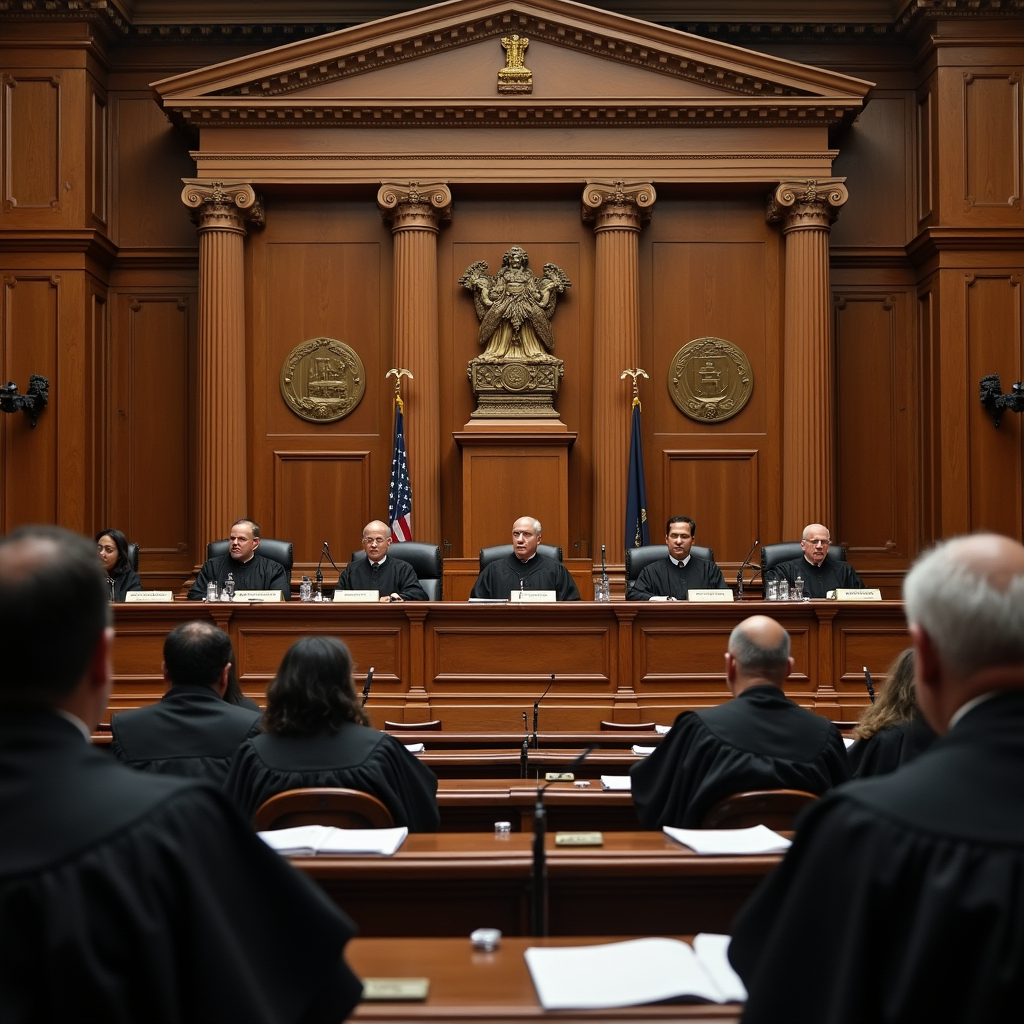
Following are the 11 questions:
- What is the meaning and content of the expression “minorities” in Article 30 of the Constitution of India?
- What is meant by the expression “religion” in Article 30(1)? Can the followers of a sect or denomination of a particular religion claim protection under Article 30(1) on the basis that they constitute a minority in the State, even though the followers of that religion are in the majority in that State?
- What are the indices for treating an educational institution as a minority educational institution? Would an institution be regarded as a minority educational institution because it was established by a person(s) belonging to a religious or linguistic minority or is being administered by a person(s) belonging to a religious or linguistic minority?
- To what extent can professional education be treated as a matter coming under minority rights under Article 30?
- Whether the admission of students to minority educational institutions, whether aided or unaided, can be regulated by the State Government or by the university to which the institution is affiliated?
- Whether the minorities’ rights to establish and administer educational institutions of their choice include the procedure and method of admission and selection of students?
- Whether the minority institutions’ right to admission of students and to lay down procedures and methods of admission, if any, would be affected in any way by the receipt of state aid?
- Whether the statutory provisions regulate the facets of administration like control over educational agencies, control over governing bodies, conditions of affiliation, including recognition/withdrawal thereof, and appointment of state employees, teachers, and principals, including their service conditions and regulation of fees, etc., would interfere with the right of administration of minorities?
- Where can minority institutions be operationally located? Where a religious or linguistic minority in state ‘A’ establishes an educational institution in the said state, can such an educational institution grant preferential admission, reservations, and other benefits to members of the religious or linguistic group from other states where they are non-minorities?
- Whether it would be correct to say that only the members of that minority residing in state ‘A’ will be treated as members of the minority vis-a-vis such institutions?
- Whether the members of a linguistic non-minority in one state establish a trust or society in another state and claim minority status in that state?
- Whether the ratio laid down by this Court in St. Stephen’s College vs. University of Delhi (1991) is correct?
- Whether the decisions of this Court in the Unni Krishnan case, except where it holds that primary education is a fundamental right, and the scheme framed thereunder, require reconsideration or modification?
- Do the non-minorities have the right to establish and administer educational institutions under Articles 21 and 29(1), read with Article 14 and Article 15(1), in the same manner and to the same extent as minority institutions?
- What is the meaning of the expressions “education” and “educational institutions” in various provisions of the Constitution? Is the right to establish and administer educational institutions guaranteed under the Constitution?
Following are the five issues framed by Justice Kripal:
- Is there a fundamental right to set up educational institutions? If so, under which provisions?
- Does the Unnikrishnan case require reconsideration?
- Can the government regulate private, aided, or unaided institutions? If so, then to what extent?
- How religious or linguistic minorities will be determined about Article 30. What is to be a unit, the state, or the nation as a whole?
- To what extent should the right to administer private aided minority institutions be regulated?
Laws discussed in the case
Article 15(4) of the Constitution of India
This Article empowers the State to make any special provision for the advancement of any socially and educationally backward class of citizens or for the scheduled castes and tribes in the matter of admission to the educational institutions maintained by the State or receiving aid from the State.
Article 19(1)(g) and Article 19(6) of the Constitution of India
Article 19(1)(g) gives every citizen the right to practise any profession or to carry on any occupation, trade, or business. This right is subject to the reasonable restrictions provided in Article 19(6). The restrictions must be reasonable, which means the restrictions imposed on citizens’ rights under Article 19(1)(g) must be logical and not arbitrary. The restrictions imposed by this Article should be in the interest of the general public. Therefore, this Article confers rights on all citizens to establish and administer educational institutions.
Article 26 of the Constitution of India
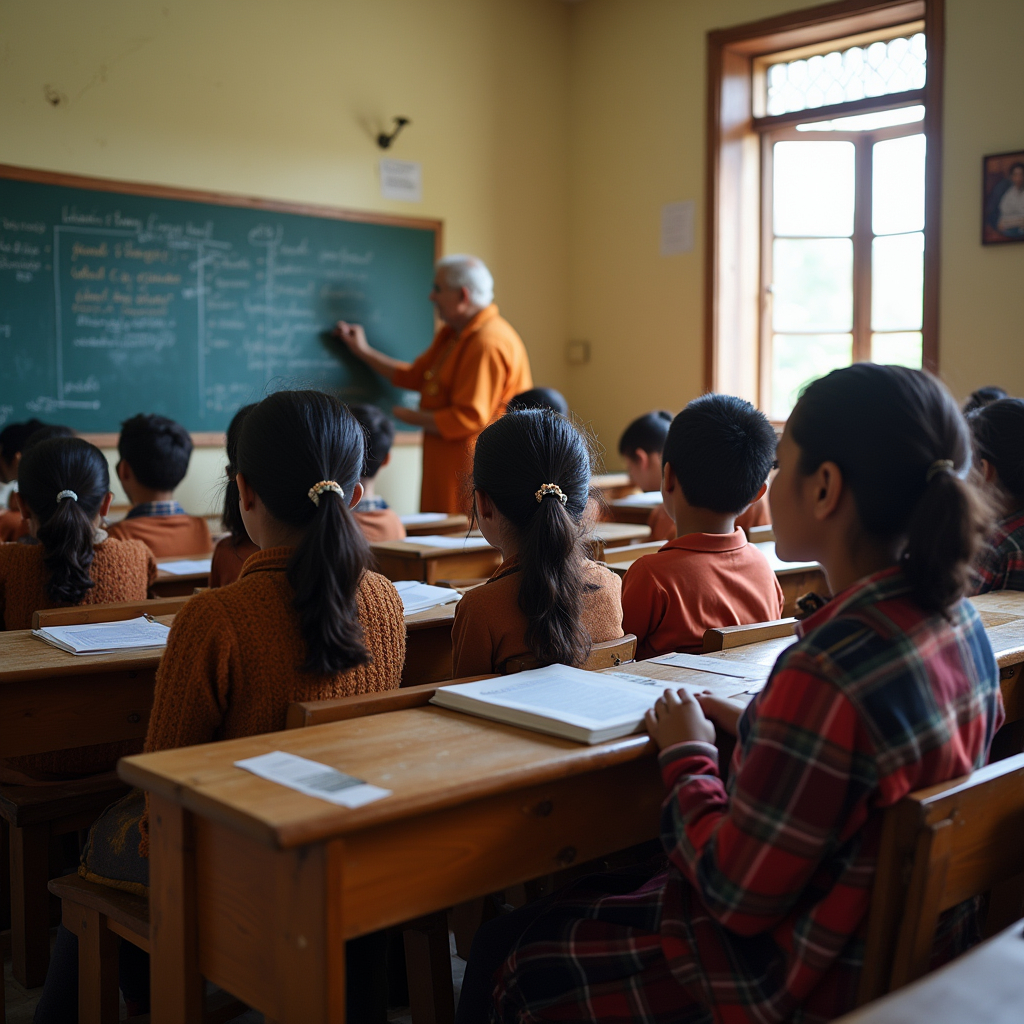
Subject to public order, morality, and health, this Article talks about the rights of every religious denomination or any section thereof to establish and maintain an institution for religious and charitable purposes that would include an educational institution. This right is subject to public order, health, and morality. A religious denomination or section thereof that does not fall under Articles 29(1) and 30(1) has the right to establish and maintain educational institutions. Article 26 does not deal with the rights of individuals but with group rights. This Article gives the majority religious denominations as well as the minority religious denominations the right to exercise the rights in Article 26, i.e., to establish and maintain religious denominations.
Article 28 of the Constitution of India
Article 28(1) says that an educational institution wholly maintaining out-of-state funds cannot impart religious instructions. However, a moral education that is not related to any denominational doctrine is not prohibited.
Article 28(2) is an exception to Article 28(1) and says that an institution is established by a trust deed, and the deed mentions the imparting of religious instructions and the institution being administered by the State. The State is obliged to impart religious instructions.
Article 28(3) provides the right to a person studying in a State-recognized institution or in an educational institution receiving aid from State funds not to take part in any religious instruction if imparted by such institution.
Article 29 and Article 30: Cultural and educational rights
Article 29(1) of the Constitution of India
It states that any section of citizens residing in India or any part thereof who has a distinct language script or culture of its own has the right to conserve the same. This Article gives rights to all sections of citizens to conserve their language, script, or culture. Even though this Article mentions in the marginal notes the interests of minorities, it does not refer to any religion. This Article applies to those sections of society who may profess different religions but have similar distinct languages, and they have the right to preserve their distinct language, script, or culture even though they profess different religions.
Article 29(2) of the Constitution of India
It provides that no citizen shall be denied admission into any educational institution receiving aid out of State funds or maintained by the State on grounds only of religion, race, caste, language, or any of them.
Article 30 of the Constitution of India
Article 30(1) gives the right to religious or linguistic minorities to establish and administer the educational institutions of their choice.
Further, Article 30(1A) requires that the Parliament, while making a Central legislation or a State legislature, while making a State legislation for the compulsory acquisition of any property of any established educational institutions administered by a minority, must ensure that the amount fixed by or determined under such law for the acquisition of the property will not be such as to impair the functioning of the educational institutions or infringe the rights given under Article 30(1).
Furthermore, Article 30(2) says that, while granting the aid, the State cannot deny the aid only because the institution is a religious or linguistic minority institution. While granting aid, the State cannot discriminate between minority and majority educational institutions. Issuance of aid or grant of aid to minority institutions by the State by applying a condition that abridges the right under Article 30 is violative. However, such conditions related to the proper utilisation of the grant and fulfilment of the objectives of the grant will be allowed and not violative.
Objective of Article 30
The objective of Article 30 is to prevent the majority from making legislation that will take away the minority’s fundamental rights to establish and administer educational institutions of their choice. This Article ensures equality between the majority and minority communities. Article 30 ensures the protection of religious and linguistic minorities and ensures secularism. Hence, Article 30 maintains the two basic structures of the Indian Constitution, i.e., equality and secularism.
The Constitution makers were very clear that Article 30 should not be subject to any restrictions as other fundamental rights have. That is why we do not find any word of restriction in Article 30, unlike Articles 19, 15, 25, and 26, among other fundamental rights. As we know, whatever rights are given under the Constitution, even if restrictions are not provided in the Article, nobody can claim a right in such a way that they are the above law.
Article 30 was enacted to provide equality, safeguards, and protection to minorities, but these Articles are being used by minorities as they have a monopoly. In this Article, several private professional educational institutions claim their interest as absolute, and they took advantage of the ambiguity found in the Article by defending themselves in their favour.
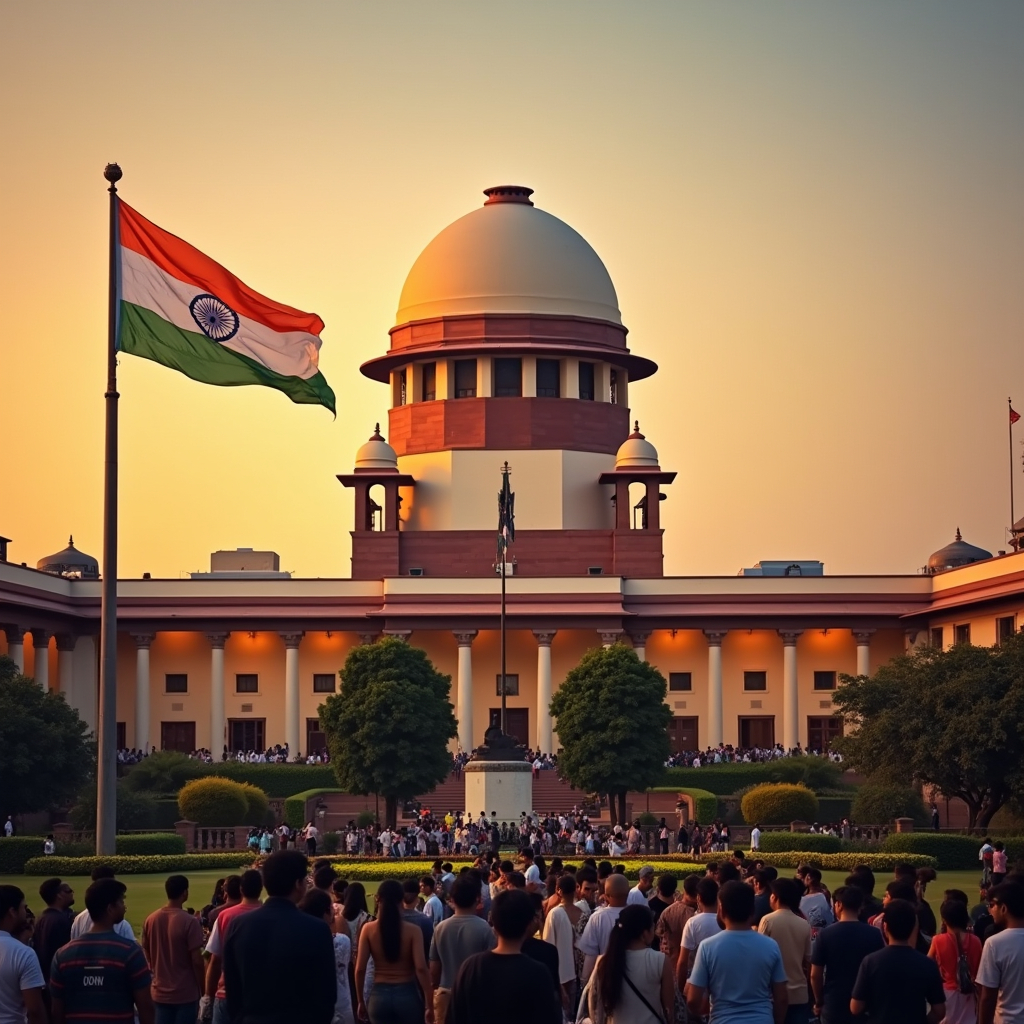
During the late 80s and early 90s, there was a mushrooming growth of private, sub-standard professional institutions in various areas of the country. In those institutions, admissions were taken on the basis of affluence and influence, and that was not the valid criteria for the admissions. These institutions change education from a pious obligation into a profit-making business. Several private institutions were established that provided technical courses in fields such as medical and engineering.
Under the guise of Article 30, these institutions started to exercise their arbitrariness. They started to take a hefty amount of money as capitation fees and admission fees. The number of seats and the number of students were decided by themselves. There were no regulatory systems to regulate the arbitrariness and stop those private institutions from sucking the blood of innocent guardians in the form of receiving hefty money.Therefore, several states started to bring laws, rules, and regulations to stop the arbitrariness of private professional educational institutions. This interference by the State Government was not acceptable to the private institutions, and they started to raise a dispute before the High Courts and the Supreme Court. Hence, it gave scope to the judiciary to step in, and institutions started approaching the court against the government’s laws and regulations that violated their fundamental rights under Articles 14, 15, 19(1)(g), 29, and 30.
A plethora of court cases are framed and decided by courts due to the ambiguous nature of Article 30.
This gave opportunities to the judicial system to interpret the wording of the above Articles benevolently and for the common good. Here, the Supreme Court stepped in to regulate this Article in the genuine interest of minorities through various landmark judgments and opined that constitutional provisions are to be interpreted by the court in such a way that they further the genuine objectives or interests of their incorporation in the Constitution by constitution makers, clearing almost all the vagueness created through this Article and laws incorporated by various governments.
Arguments of the parties in the case
Contentions raised by the petitioners
- The learned counsel appearing for petitioners argued that the Karnataka Educational Institution (Prohibition of Capitation Fee) Act, 1984, is in breach of Article 30 of the Constitution, which allows linguistic or religious minorities to establish and administer educational institutions of their own choice. The counsel added that Konkani is a minority language spoken by a small group of people in the state of Karnataka. T.M.A. Pai was a Konkani speaker by birth, as per the petitioners. Hence, after his death, a Konkani linguistic institution was founded to honour his memory and promote his goals. Because Konkani is a minority language in Karnataka, it is protected under Article 30.
- On behalf of all these private institutions, the learned counsels submitted that the Constitution provides fundamental rights to establish and administer educational institutions to non-minorities in Article 19(1)(g) and/or Article 26, and to minorities, these rights are provided under Article 30. So, private institutions should have complete autonomy in establishment and administration. States should not have any power to put any conditions on or interfere with the administration of these institutions.
- On behalf of private non-minority unaided educational institutions, it was contended that secularism and equality are the basic structures of the Constitution and, therefore, provisions of the Constitution should be interpreted in such a way that the rights of private non-minority unaided educational institutions are equal to the rights of minority institutions. They should have the same freedom of administration that minority institutions have.

- The minority unaided private institutions contended that the Constitution has given them the right to establish and administer the educational institutions of their choice. The use of the word “of their choice” in Article 30(1) gives them independence to establish and administer educational institutions. The State cannot interfere with our independence to establish and administer. We can manage or administer our educational institutions as we wish.
- The petitioner’s counsel contended that the scheme formulated in the Unni Krishnan case must be reconsidered. This scheme did not fulfil its objective. It helps the privileged students rather than the meritorious students. It creates economic losses for institutions. The petitioner’s counsel also contended that the scheme had imposed unreasonable restrictions on the administration of private educational institutions, specifically on minority educational institutions. The rights provided under Article 30 to minorities are hampered by the Unni Krishnan Scheme.
- On behalf of the minority private institutions, the counsel submitted that the interpretation of Articles 29, 30, and other provisions shows that religious or linguistic minorities have a right to establish and administer the educational institutions of their choice. The use of the phrase “of their choice” in Article 30(1) gives them the right to establish and administer any kind of educational institution, whether it is a school, a degree college, or a professional institution. These institutions have the motto of providing benefits to religious or linguistic minorities, and they admit students of their choice. They further contended that Article 30(2) provides that the State cannot deny aid to these institutions only because they are established and administered by a minority. The states cannot impose any such conditions that take away or curtail the character of minority institutions while granting aid.
- The learned counsel also pleaded that Article 29(2) could not be applied in such a way that it curtailed or restricted the rights of minorities provided in Article 30 to grant admission to students of their own religion or language.
- The right to constitute a governing body, appoint teachers, and admit students are essential elements of the administration of educational institutions. The State cannot interfere with these rules. The secular laws, such as health and town planning, could be applicable, but while applying the secular laws, no rules could be framed that intervene or curtail the rights of minorities provided in Article 30. The learned counsel also argued that the manners and modes of appointment of teachers and selection of students had to be within the exclusive domain of the institutions, and State interference could not be permitted. The minority institutions further contended that Article 30 is not subject to Article 29(2). Article 30 is an absolute right.
Contentions raised by the respondents
- The learned Solicitor General for respondents agreed with the contention of the petitioners that the right to establish and administer educational institutions for non-minority is provided under Article 19(1)(g) and/or Article 26 of the Constitution, and, similarly, Article 30 gives rights to the minority to establish and administer private educational institutions.
- He also agreed with the contention of the petitioners that the scheme provided in the Unni Krishnan case should be reconsidered.
- He also agreed that private, unaided educational institutions are entitled to greater autonomy.
- The main contention of dispute is the provision of Article 29(2). Respondents strictly opposed the contention of the petitioners that Article 29(2) will not apply to minority institutions and, according to the use of the phrase “of their choice”, they can only admit the students of their own religious and linguistic communities. He stated that Article 29(2) will also apply to the institutions established under Article 30, i.e., minority institutions, and these institutions do not deny admission based on religion, caste, language, or any of them.
- The learned counsel appearing for respondents contended that, because Article 30 is not an absolute right, the government can put reasonable regulations and limitations on minorities’ private educational establishments in the interest of effective and equal management.
- The counsel further contended that the Act was passed to put an end to the practice of charging capitation fees and commercialising education. As a result, the Act does not violate Articles 30, 14, and 19 of the Constitution.
Judgement in T.M.A. Pai Foundation & Ors vs. State of Karnataka & Ors (2002)
The majority judgement, consisting of six judges, held that the status of religious and linguistic minorities can be determined by the State. The right given under Article 30 to religious or linguistic minorities to establish and administer the educational institutions of their choice is not an absolute right or above the law, and any rules or regulations framed in the national interest or public interest will be equally applicable to minority or non-minority institutions. The right to administer does not include the right to maladminister.
The general laws of the land applicable to all persons have also been held to be applicable to minority institutions. For example, laws relating to taxation, sanitation, social welfare, economic regulation, public order, and morality. States also cannot put in place restrictions that contravene the essential elements of administration, for example, the right to constitute a governing body, appoint teachers, and admit students. Admission of students is an essential ingredient of the right to administer under Article 30. The process of admission must be transparent, fair, and based on merit.
Rationale behind the judgement in the case
The ratio decidendi of a judgement is its reasoning, which can be deciphered only upon reading the same in its entirety. The ratio decidendi of a case, or the principles and reasons on which it is based, is distinct from the relief finally granted or the manner adopted for its disposal.

In this case, the majority judgement said that the unit of measurement of the minority will not be the arithmetical tabulation of less than 50 percent as prescribed in the case of In Re the Kerala Education Bill, but a geographical entity of the State will be taken into consideration for the status of the minority. The reason for this judgement is that, since the reorganisation of the State in India has been on a linguistic basis, to determine the minority, the unit will be the State and not the whole of India. Similarly, religious minorities will also be construed State-wise. This was affirmed by adding Articles 350A and 350B to the Indian Constitution.
Further, the Court held that admissions in professional institutions will be on a merit basis because there are still a large number of professional institutions engulfed in profiteering and charging capitation fees, and this can be stopped only when admission is made on a merit-based selection basis.
In respect of restrictions imposed by the State, this Court held that, just because imparting education is the State’s duty and it is not in a capacity to do it, private educational institutions impart the State’s duty, and the State cannot nationalise the private educational institutions either in whole or in part by putting unreasonable restrictions. The restrictions imposed by the State must be reasonable, in the interest of the general public, of the utmost importance, and good for education as a whole.
Autonomy of unaided non-minority institutions is an important facet of their right under Article 19(1)(g) and, in the case of minority institutions, under Article 19(1)(g) read with Article 30 of the Constitution. Therefore, unaided institutions should have autonomy in the matter of admission and fee structure.
Issue-wise judgement by the Supreme Court in the case
Is there a fundamental right to set up educational institutions? If so, under which provisions?
The majority of judges said that all citizens have the fundamental right to establish and administer educational institutions under Article 19(1)(g) and Article 26(a). Article 30 specifically talks about minorities’ fundamental right to establish and administer educational institutions of their choice, whereas Article 19(1)(g) provides rights to every citizen to practise any profession or to carry on any occupation, trade, or business.
The fundamental rights under Article 19(1)(g) are subject to the reasonable restrictions imposed by the State in the interest of the general public provided under Clause 6 of Article 19.
In the State of Bombay vs. R.M.D. Chamarbaugwala (1957), it was held that education is a per se work regarded as charitable in nature. It will not come under trade and business, where profit is the motto. The court further said that if there is any doubt about whether education is a profession or not, it does appear that education will fall within the meaning of the expression “occupation”.
This Court quoted the judgement of Sodan Singh and Ors. v. New Delhi Municipal Committee & Anr. (1989), where a five-judge Bench said that “... ‘Occupation’ would be an activity of a person undertaken as a means of livelihood or a mission in life.”
This Court further observed that Article 26 says every religious denomination or any section thereof shall have the right to establish and maintain institutions for religious and charitable purposes that include educational institutions. Furthermore, the right under Article 26(a) is subjected to public order, morality, and health. The Court further held that the religious denomination, or any section thereof that does not fall within the special categories in Articles 29(1) and 30(1), has the right to establish and maintain religious and educational institutions. This Article gives fundamental rights to both majority and minority religious communities to establish educational institutions. Furthermore, this Court said that the right under Article 30 in this respect is an additional right given to the minority. The right given under Article 30 is like all other fundamental rights, not an absolute right. This right is subject to Article 29(2).
Does the Unnikrishnan case require reconsideration and modification?
In the present case, the eleven-judge Bench reconsidered the Unnikrishnan judgement.
In the Unnikrishnan case, a five-judge Bench held that the private, unaided, recognized, or affiliated educational institutions running professional courses are entitled to charge higher fees than the government institutions charge for the same course, but it should not be more than that fixed by the State. The Court stated that charging capitation fees is illegal and that the commercialisation of education is prohibited.
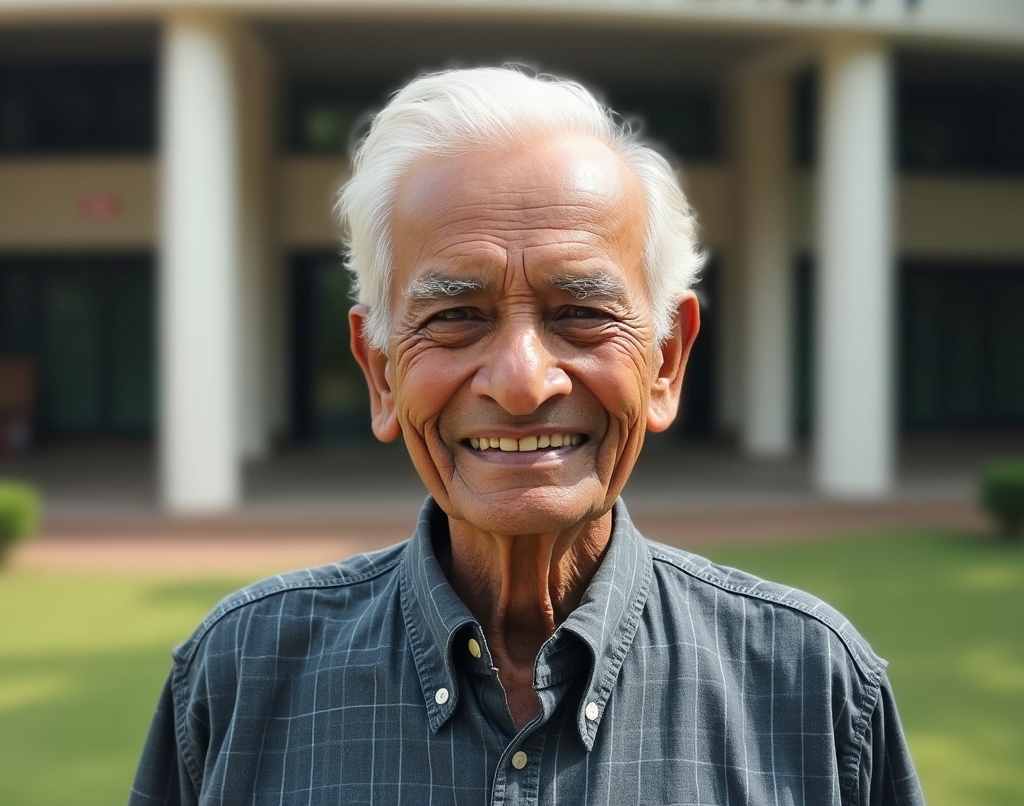
In the case of privately aided, recognized, or affiliated educational institutions, the Court held that the government has the power to frame rules and regulations in the matter of admission and fees.
The then Chief Justice Kirpal, with a majority of judges, decided that the Unni Krishnan scheme formulated in the Unni Krishnan case was unconstitutional. The directions issued by this Court to the governments, the University Grants Commission (UGC), or other concerned bodies or private institutions are also declared unconstitutional. The judges in the present case agreed upon the two holdings of the Unni Krishnan judgement. One is primary education as a fundamental right, and the second is that no capitation fee is allowed.
The contention made by the learned counsel is that the fixation of seats as 50 percent free seats and 50 percent payment seats does not fulfil its objectives. Most of the free seats filled through CET are acquired by affluent students, and private professional educational institutions are not able to generate the revenue that they invested in a student. It incurred losses for institutions.
On the ground of revenue shortfalls due to the Unnikrishnan judgement, the Court, in the present case, permitted the private professional institutions the Non-Resident Indians (NRI) quota to be carved out of the 50 percent payment seats for which charging a higher fee was permitted. Directions were issued by the Court to regulate or fix a ceiling on fees to the UGC, AICTE, the Medical Council of India (MCI), and the Central and State governments. The Court further held that the restrictions imposed through the Unnikrishnan Schemes were not reasonable restrictions under Article 19(6).
For imparting quality education, institutions need qualified and experienced teachers and proper facilities and equipment. All these needs require capital investment, and the scheme prohibiting capitation fees makes it difficult for institutions to continue their work; therefore, it is not a reasonable restriction. The Court also held that surrendering the total process of selection to the State is unreasonable.
Finally, in the present case, the majority of judges decided that the decision in the case of Unnikrishnan with respect to the scheme framed related to the grant of admission and the fixing of the fees was not correct. Hence, the said decision to that extent and the consequent direction issued to the UGC, AICTE, Medical Council of India, and Central and State Governments were overruled.
Can the government regulate private, aided, or unaided institutions? If so, then to what extent?
In today’s time and society, private educational institutions are the backbone of the Indian education system. We cannot deny these institutions’ roles in imparting quality education and contributing to national development. While deciding this issue, the judges first took private-aided and unaided non-minority educational institutions into consideration.
Private-aided and unaided non-minority educational institutions
This heading is further classified as follows:
Private, unaided, non-minority educational institutions
The essential ingredient of the right to establish and administer educational institutions includes the following rights:
Right to admit students
While the State has the right to prescribe necessary qualifications for admission, private, unaided colleges have the right to admit students of their choice, but they must comply with the conditions, if any, and the process of admission must be objective and rational. For example, admission of students belonging to the weaker section of society in small percentages through scholarships or freeships, if not granted by the government, is an objective and rational process.
Right to set up a reasonable fee structure
Regarding this, the majority of judges held that the fee structure should be set up in such a way that it does not amount to profiteering. The fee structure must generate funds to be incorporated for the betterment of educational institutions by providing facilities necessary for students. A rigid fee structure is not allowed.
Rights to constitute a governing body
Private institutions have the right to constitute their own governing body, where the qualifications of the members of the governing body may be prescribed by the state or the concerned university. But if the state nominates some specific person on a political basis in the governing body, it amounts to an inhibition of his right to establish and administer educational institutions.
Rights to appoint staff
In this regard, the majority of judges pronounced that the appointment of teachers, either directly by the department or through a service commission, would be an unreasonable restriction on private, unaided educational institutions.
Rights to take disciplinary action for dereliction of duty by employees
The majority of judges in this aspect held that management of private unaided institutions is neither required to take prior permission or consent or ex post facto approval of government authority to initiate disciplinary actions against the dereliction of duty by employees nor subsequent permission is required to impose the penalty on proven dereliction of duty by teachers or staff. The majority of judges suggested the setup of an educational tribunal to hear the appeals of aggrieved parties.

The regulatory measures imposed on private educational institutions that ensure the maintenance of proper academic standards, atmosphere, and infrastructure, including qualified teachers, and the prevention of maladministration are allowed to be applicable to private educational institutions’ right to establish and administer educational institutions.
The Court further held that the compulsory nomination of teachers and staff for appointments is an unacceptable restriction. Similarly, compulsory nomination of students for admission will also not be allowed. Fixing a rigid fee structure and unnecessarily intruding on the composition of the governing body will not be accepted.
Private institutions that do not seek aid or financial assistance are known as “private unaided institutions”. The essence of private educational institutions is autonomy in management and administration. Greater autonomy is provided to the private, unaided institutions in their day-to-day administration.
In unaided educational institutions, the fixation of the fee must be in the hands of the institutions, but profiteering of money will not be allowed. Rules and regulations for different levels of education, for example, at the school level, at the college level, and at the professional level, are determined differently, so the extent of control or regulation will also be different in the private aided and unaided institutions.
The private, unaided school also requires maximum autonomy with regard to the essential ingredient of the right to establish and administer institutions. The judges, in the present case, also paid heed to the scarcity of private, unaided non-professional colleges or educational institutions and said these non-professional unaided institutions also required maximum autonomy like the schools.
They further said that the authority that grants recognition or affiliation to the private, unaided educational institutions has certain terms and conditions that must be related to academic and educational matters and for the welfare of students and teachers.
Private unaided professional colleges
The Court discussed what types of regulations can be framed in these types of institutions and to what extent. The majority of judges held that the government or university, while granting recognition or affiliation to these types of institutions, ensures that there is a merit-based selection, and at the same time, management must have sufficient discretion in admitting students.
The Court opined that in these types of institutions, management has the power to select teachers and staff based on qualification and eligibility criteria provided by the state or university, but the process of selection must be rational.
The Court observed that there must be a rational fee structure and, hence, capitation fees are not allowed. A reasonable surplus for the furtherance of education is allowed, but not profiteering. The conditions and regulations granting recognition or affiliation must take care of the welfare of students and teachers. The Court further stated that those conditions should also ensure uniformity, efficiency, and excellence in educational courses, and those that are related to the academic and educational character of the institution are valid, but conditions that may lead to governmental control of the administration of these institutions are not valid.
Private aided non-minority educational institutions
These types of institutions do not enjoy that much autonomy in the management and administration of the institutions, unlike the unaided institutions. But these institutions are also not to be treated as government-controlled institutions or run by government institutions. Therefore, the government cannot interfere with the constitution of the governing body.
Other aided non-minority institutions
There are a large number of educational institutions, for example, schools and non-professional colleges, that cannot run without the aid of the State. In these institutions, the government is entitled to make regulations related to admissions procedures, the appointment or removal of teachers, and non-teaching staff.
Private aided and unaided minority institutions
Private unaided minority institutions
This Court said that, like other private unaided institutions, private unaided institutions run by minorities are also entitled to maximum autonomy in the administration of such institutions, such as the admission process, recruitment of employees, and fixing fee structures.
The Court further held that these institutions also comply with the regulations imposed by the concerned authorities, but such regulations must not be such that they curtail the character of minority institutions. Admission of students to unaided minority educational institutions, viz., schools and undergraduate colleges, where the scope for merit-based selection is practically nil, cannot be regulated by the concerned State or university, except for providing the qualifications and minimum conditions of eligibility in the interest of academic standards.
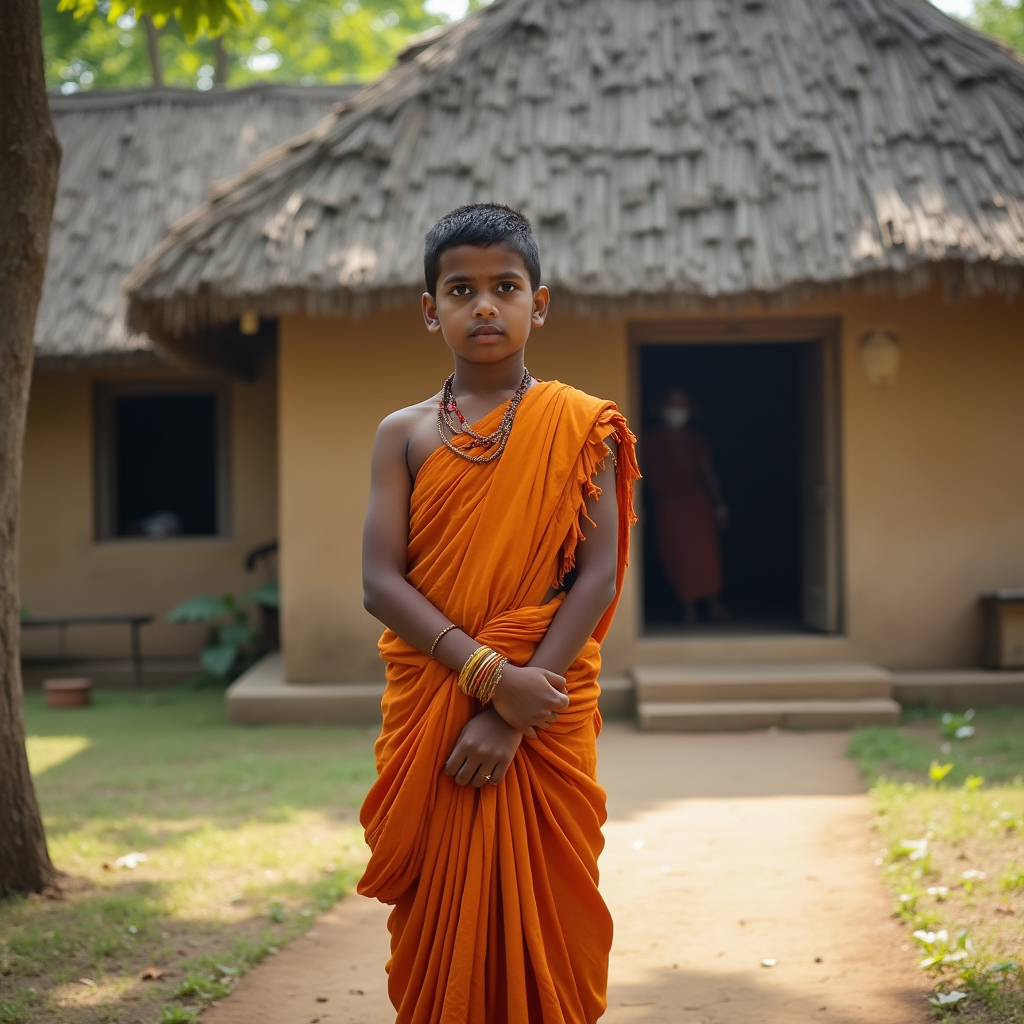
Furthermore, this Court held that the institution, which does not take grants of aid from the State, has the right and discretion to select or choose students of their choice, but the process of selection or admission must be rational and transparent. The Court also decided that the right to administer is not an absolute right, and States or concerned universities may impose regulatory measures to ensure educational standards and maintain their excellence. These regulatory measures are more relevant in the case of admission to professional institutions.
Private aided minority institutions
The majority of the judges dealt with this head, i.e., the private aided minority institutions, with the issue, “To what extent does the right to administer the private aided minority institutions be regulated?”
The majority pronounced that private minority-aided institutions have the right to admit students of minority communities and, at the same time, it also takes admission of non-minority students to a reasonable extent so that rights under Article 30(1) are not impaired and citizens’ rights under Article 29(2) are not infringed.
How religious or linguistic minorities will be determined in relation to Article 30. What is to be a unit, the state or the nation as a whole?
With respect to this issue, the Court cited a few judgements of this Court, namely, the Kerala Education Bill case, D.A.V. College vs. State of Punjab & Ors., and D.A.V. College Bathinda vs. The State of Punjab & Ors.
In D.A.V. College vs. State of Punjab & Ors. (1971), the Supreme Court held that the Arya Samajis, who were Hindus, were a religious minority in the State of Punjab, even though they may not have been so in relation to the entire country.
In D.A.V. College, Bhatinda vs. State of Punjab & Ors. (1971), the Supreme Court held that “what constitutes a linguistic or religious minority must be judged in relation to the State in as much as the impugned Act was a State Act and not in relation to the whole of India.”
Therefore, in the present case, the majority judges also held that, with regard to a state law, the unit to determine a religious or linguistic minority can only be the State.
To what extent should the right to administer private-aided minority institutions be regulated?
In this respect, the majority of judges agreed upon the contention of the learned Solicitor General that the rights conferred under Part III of the Constitution are not an absolute right but instead subject to reasonable restrictions and other provisions of the same Part.
Therefore, it is not acceptable that the right of religious or linguistic minorities to establish and administer the educational institutions of their choice is above the law, and no law will be applicable to this, not even the Constitution. The Court further held that the right to administration does not mean the right to maladministration.

This Court further held that the right to administer is not absolute but must be subject to reasonable regulations for the benefit of the institutions, and Article 30(1) is subject to general laws such as those related to law and order, taxation, sanitation, social welfare, economic regulation, health, and the laws made in the interests of national security, public order, and morality. Hence, by the same analogy, the Court held that there is no reason why regulations, generally connected with the welfare of students and teachers, should not be applied to the institutions. Such regulations provide a proper academic atmosphere and do not interfere in any way with the right of administration under Article 30(1).
The Court further held that granting aid is not a constitutional imperative. The State is not compelled to grant aid, but if the state grants aid, it cannot deny the grant to the private educational minority institutions only because they are minority institutions. Furthermore, the Court held that it cannot be said that States cannot impose conditions on all types of institutions while granting aid because the imposition of conditions ensures the proper utilisation of the grant and the fulfilment of the objectives of the grant. However, the conditions that curtail or abridge the right to establish and administer the educational institutions of their choice or that dilute the minority status of the institutions are not permissible.
The Court further held that, the moment a grant-in-aid was obtained by any institutions, Article 28 comes into play. Clauses (1) and (3) of Article 28 apply to all educational institutions that take grants of aid, whether run by a majority or a minority. Article 28(3) talks about the right of the students to study in a State-recognized institution or in an institution that receives aid from the State and not to take part in any religious instruction imparting from the institution.
Just like Clauses (1) and (3) of Article 28, Article 29(2) refers to “any educational institution maintained by the State or receiving aid out of the State funds”.
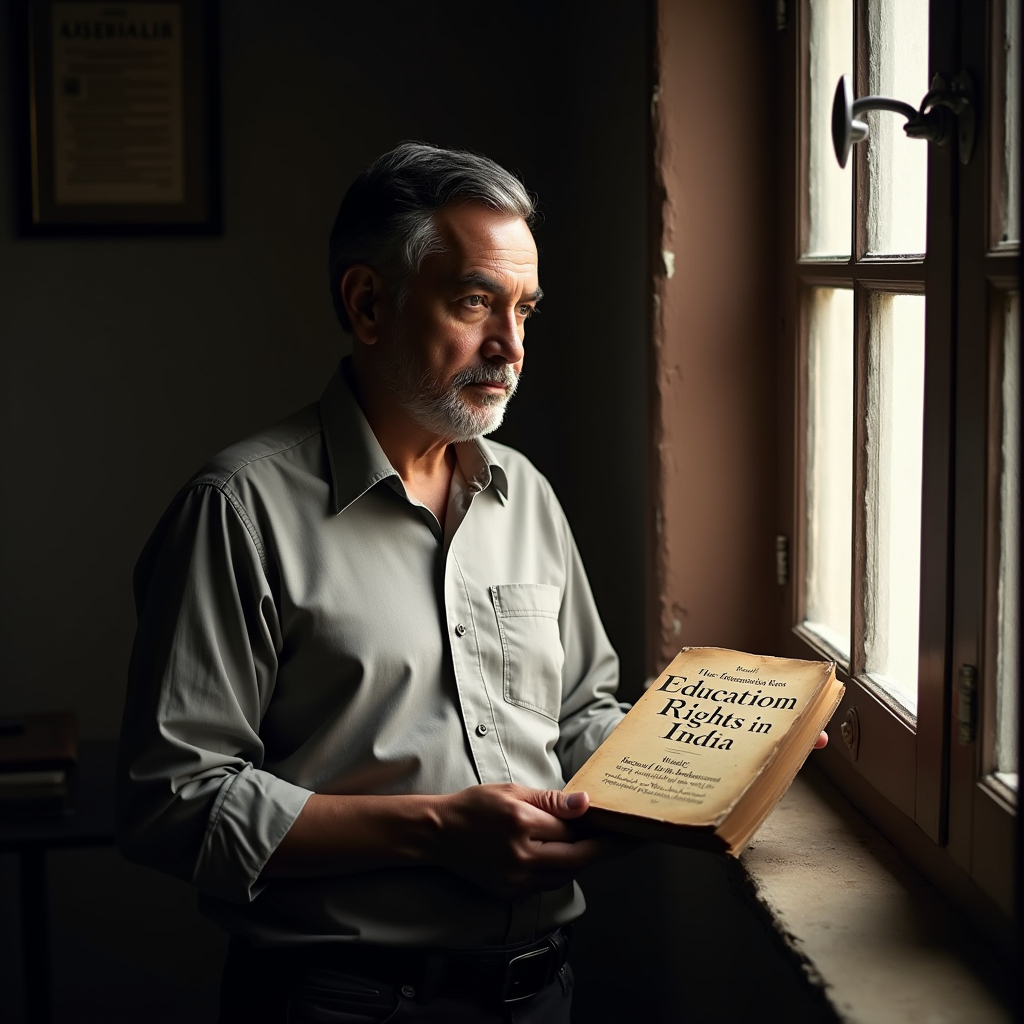
The Court opined that, by virtue of clause (2) of Article 29, no citizen shall be denied admission into any minority educational institution receiving aid out of State funds, only on the basis of religion, race, caste, language, or any of them. Here, this sub-clause has, to some extent, curtailed one of the essential components of the right of administration, for example, the right to grant admission, of minority educational institutions. Other than the right to admission, some more rights of aided minority educational institutions are abridged or curtailed due to clauses (1) and (2) of Article 28.
A minority institution has the right to impart religious instructions, but when the institution is wholly maintained out of State funds, this right will be barred under Article 28(1). Similarly, by virtue of Article 28(3), a minority institution receiving aid out of State funds or recognised by the State cannot compel the student to attend the religious instructions.
Therefore, the Court held that if the curtailment of the rights of administering the minority institutions on receiving aid or wholly maintained out of State funds is valid under Clauses (1) and (3) of Article 28, then there is no reason why Article 29(2) will not be applicable. There is nothing in the language of Article 28(1) and (3), Article 29(2), and Article 30 to suggest that on receiving aid, Article 28(1) and (3) will apply, but Article 29(2) will not.
The Court also pointed out the right of aided minorities to admit students from minority communities when Article 29(2) was imposed on the institution. The Court takes the example of the St. Stephen’s College case. In this case, the Court, while upholding the admission process, held that to maintain the minority character of the private minority aided educational institutions, it is entitled to prefer students from its communities, and the State may regulate the intake in this category with due regard to the area that the institution was intended to serve, but that this intake should not be more than 50 percent in any case. Here, the majority judges agreed with the ratio in the St. Stephen’s College case but had objections to accepting the rigid percentage stipulated therein. The majority judges suggested that, to serve the purpose or interest of the minority communities for which the institution was founded, the percentage of students from minority communities to be admitted must depend upon the level of the institution, whether it be a primary, secondary, or high school or a college, professional or otherwise, and on the population and educational needs of the area in which the institution is to be located.
Analysis of the case
Who is minority
The first and foremost word the Supreme Court pays attention to is the word “minority”. It has been used by the Constitution as a religious and cultural minority, but nowhere in the Constitution it was defined. Similarly, the Motilal Nehru Report (1928) and the Sapru Report (1945) also talked about various rights of minorities and minority commissions, respectively, but nowhere defined who is the minority.
The definition and meaning of the word minority from various other sources are as follows:
The word “minority” is derived from the Latin word “minor,” which is suffixed with “ity” which means “small in number”.
According to the constituent assembly, the concept of the minority is not related to numerical values; it is related to a community that suffered some disadvantage from the rest of the community and was entitled to special treatment from the State.
The U.N. Sub-Commission on Prevention of Discrimination and Protection of Minorities defines Minorities as “a group that is numerically inferior to the rest of the population of a State, in a non-dominant position, whose members—being nationals of the State—possess ethnic, religious, or linguistic characteristics differing from those of the rest of the population and show, if only implicitly, a sense of solidarity directed towards preserving their culture, traditions, religion, or language.”
The National Commission for Minorities Act, 1992, (shortly referred to as the NCM Act, 1992), has notified Muslims, Sikhs, Christians, Buddhists, Jain and Zoroastrians (Parsis) as minority communities under Section 2(c) of the NCM Act, 1992.
The National Commission for Minority Educational Institutions Act, 2004 (shortly referred to as the NCMEI Act, 2004) has been enacted to safeguard the educational rights incorporated under Article 30 of the Constitution. Section 2(f) of the Act defines a “minority” as a community that is notified by the Central Government as a minority. Section 2(g) defines a “Minority Educational Institution” as a college or an educational institution established and administered by a minority or minorities.

Supreme Court on Minority
For the first time, the judiciary tried to define minorities in the case of In Re: The Kerala Education Bill, 1957. In this case, the Supreme Court held that a minority means a community that is numerically less than 50 percent of the total population.
Further, in Guru Nanak Dev University & Anr. vs. Harjinder Singh & Anr. (1994), the Supreme Court rejected the plea of the State Government of Punjab about minority status and held that the status of minorities would be decided by the law that is to be implemented. If it is state legislation, then the minority will decide on the state population.
Recently, an issue related to who is a minority and how to determine the minority was raised before the Supreme Court in Ashwini Kumar Upadhyay vs. Union of India, 2020 (the Ashwini Kumar Upadhyay case) in a writ petition 836 of 2020. Section 2(f) of the NCMEI Act, 2004 has been challenged and a prayer has been made to issue guidelines for the identification of minority at State level, as held in the 11 judges bench of the T.M.A.Pai Foundation, 2002 case. Another writ petition 446 of 2022 in Devkinandan Thakur Ji vs. Union of India, 2022 (Devkinandan Thakur Ji case) has also been filed before the Hon’ble Supreme Court, wherein Section 2(c) of the NCM Act, 1992 has been challenged and a prayer has been made to define ‘Minority’ and lay down guidelines for identification of minorities at the district level. The Supreme Court clubbed both writ petitions under the case titled Devkinandan Thakur Ji vs. Union of India, 2022. The Hon’ble Court orally observed that it cannot entrain the prayer to determine the minority communities at district leve;l therefore, it is contrary to the precedent laid down in the T.M.A.Pai Foundation, 2002 case. This case is still pending before the Hon’ble Supreme Court, and in these cases, the Court will decide the constitutionality of Section 2(f) of the NCMEI Act, 2004 and Section 2(c) of the NCM Act, 1992.
Judgements after T.M.A. Pai Foundation & Ors. vs. State of Karnataka & Ors. (2002)
The landmark judgement of the T.M.A. Pai Foundation case was understood by various State Governments from different perspectives and enacted different statutes, rules, and regulations to be applicable to private educational institutions. They also issued several orders under Article 162 of the Constitution for the regulations of these institutions. Therefore, several petitions were filed before the various courts against the statues, rules, regulations, and orders enacted or ordered by the State Governments after the decision in the T.M.A. Pai Foundation case.
A few of the judgements delivered after the T.M.A. Pai Foundation case are as follows:
Islamic Academy of Education & Anr. vs. State of Karnataka & Ors. (2003)
In this case, the Supreme Court held that the State Government cannot fix a rigid fee structure. Each institute must have the freedom to fix its own fee structure, taking into consideration the need to generate funds to run the institution and to provide facilities necessary for the benefit of the students. They must also be able to generate surplus, which must be used for the betterment and growth of that educational institution. Any institutions involved directly or indirectly in profiteering or charging capitation fees can be penalised and can also lose their recognition or affiliation.
In this case, the Court interpreted the T.M.A. Pai Foundation case and tried to remove the doubt created by the T.M.A. Pai Foundation case.
Issues framed by the court are as follows:
Do educational institutions have the right to fix their own fee structure?
In this regard, the Court ordered that, to give effect to the judgement in the T.M.A. Pai Foundation case, the respective State Government and concerned authorities shall set up a committee in each State headed by a retired High Court judge. Each educational institution must place its fee structure and all related documents for academic years in advance before the committee. The committee then decides whether the fee structure proposed before it is justified and whether institutions are not profiteering and charging capitation fees.
The committee is at liberty to approve the fee structure produced by the institution or may reject and propose another fee structure. Once a fee is fixed by the committee, the institution cannot charge any fee directly or indirectly other than the fixed one. If the institution does so, it will amount to capitation fees.
The government or concerned authorities should frame rules and regulations, if not already framed, that help in finding whether any institution is charging capitation fees or profiteering or not, and if any institution does so, then that institution can be penalised appropriately and also face the cancellation of its recognition or affiliation.
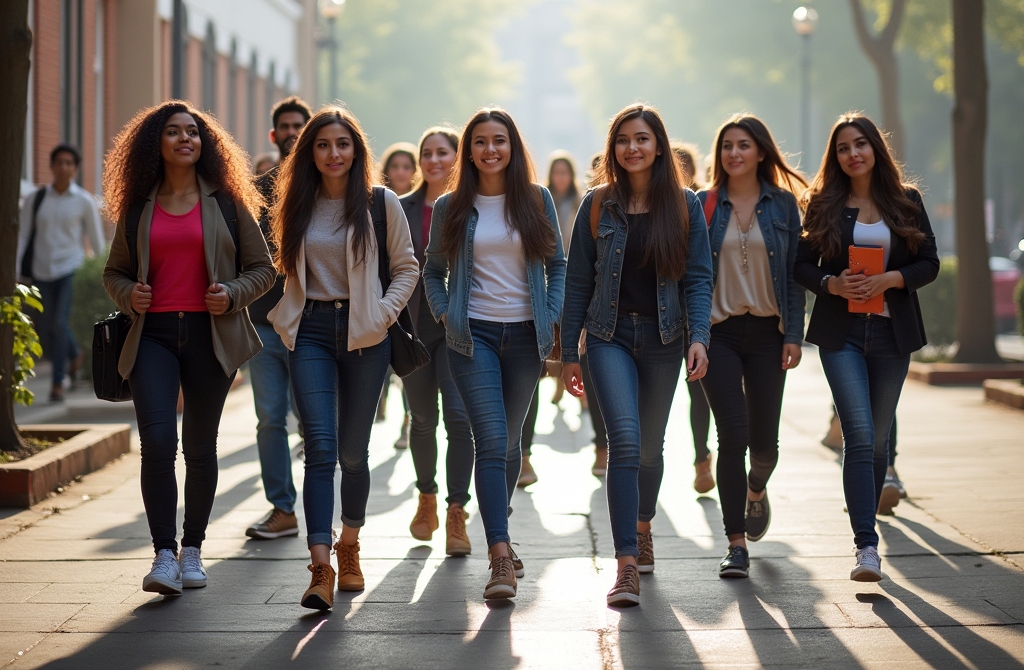
Do minority educational institutions or non-minority educational institutions have the same rights?
With respect to this issue, the Court held that, from the reading of paragraphs quoted from the T.M.A. Pai Foundation case at first glance, it appears that both have the same rights; but, in reality, these paragraphs say about the rules, regulations, and laws that cannot be different for the minority and majority.
Non-minority educational institutions do not have protection under Article 30. For example, if the government wants to nationalise education, it may enact a rule that bars the establishment of private non-minority educational institutions, and, hence, the rights of non-minority to establish private educational institutions will be debarred, but minority educational institution rights under Article 30 are still privileged. Similarly, the government may take over the management rights of non-minority educational institutions, but this cannot happen with private minority educational institutions due to the rights given under Article 30. Minority educational institutions have the preferential right of admission to admit students from their own community, but non-minority educational institutions do not have this right. Therefore, minority and non-minority private educational institutions are not on equal footing.
However, when questions of national interest, public order, health, and morality come up, both will be on equal footing.
Whether the private, unaided professional colleges handle the admission process itself and fill in the seats 100 percent; if not, then to what extent do they fill the seats? Can private, unaided professional colleges admit students by making their own method of admission process?
In regard to the above-mentioned two issues, the present Court held that private unaided professional colleges and other educational institutions, i.e., schools and undergraduate colleges, are different, and criteria for admission or selection in private unaided professional colleges are on a merit basis. Private, unaided professional colleges include both minority as well as non-minority professional colleges.
The Court further made distinctions between minority and non-minority professional colleges and said that, in private, unaided minority professional colleges, “a different percentage” can be prescribed for the management quota seats for admission, whereas, in the case of non-minority private, unaided professional colleges, “a certain percentage of seats” can be reserved for admission by the management, and the rest of the seats have to be filled up on the basis of merit as per the common entrance tests conducted by government agencies.
The Supreme Court clarified that, in private, unaided non-minority professional colleges, a certain percentage of seats is determined by the State based on local needs, and provisions have to be made for the poorer and backward sections of society to get admission.
In the case of private, unaided minority professional colleges, in fixing the percentage of the management quota, the State will not only consider the local needs but also the interests and needs of that community in the State. The private, unaided minority professional colleges, on their management quota, take admission of the students of their own communities, not the students of other communities, even if the students of their own community are not meritorious. But the management of the private, unaided minority professionals colleges, while taking consideration of the students from their own community, must take care of the inter-se merit amongst students of their community. This Court further said that if the management quota seats are not filled by students from minority communities, then the other students can be admitted only on the basis of merit as per the common entrance test conducted by government agencies.
Admission on management quota seats
The question that arises before the Court is: how can the management of both minority and non-minority professional colleges admit students in the quota allotted to them?
The Court held that management quota seats in these professional colleges could be filled on either of the following grounds:
- The common entrance tests conducted by the State; or
- The common entrance test is to be conducted by an association of all colleges of a particular type in that State, e.g., medical, engineering, technical, etc.
- This Court directed that if it is found that any student has been admitted without merit, a penalty can be imposed on that institute, and in appropriate cases, recognition/affiliation may also be withdrawn.
Admission by its own method or process
On this issue, the Supreme Court said that this Court leaves it open for the institutions that have been established and who have had their own admission procedure for, at least, the last 25 years to apply to the permanent committee directed to be constituted for the conducting of entrance tests and admission-related issues.
Direction to constitute two committees
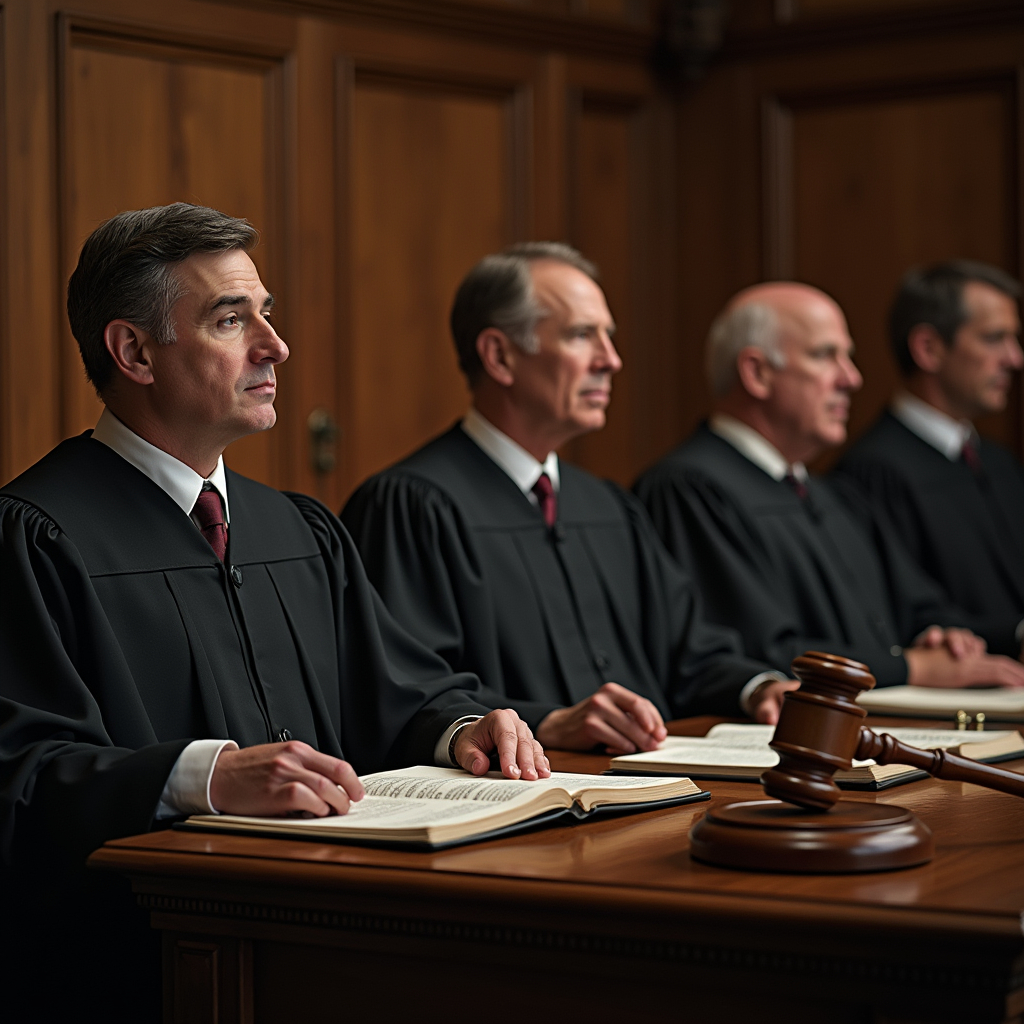
In this case, the Court directed to constitute two committees, one for the fixation of fees and another for conducting entrance tests, and deal with admission-related issues with the respective State Governments.
Permanent committee for admission procedure
- This Court directed that the respective State Government constitute a permanent committee to conduct entrance tests and deal with admission-related issues.
- The committee will oversee and ensure that the tests conducted by the association of colleges are fair and transparent.
- For each State, there will be a separate committee.
- The committee will be headed by a retired judge of a High Court appointed by the Chief Justice of that State.
- This committee has the power to permit the institution to adopt its own admission process if the institution has been established 25 years ago and has been following its own admission process for the last 25 years.
- This court also clarified that the institution that has not been established 25 years ago and has not been following its own admission process for the last, at least, 25 years shall not be permitted to apply for or be granted exemption from admitting students in the manner set out by this court in the present case.
- The committee has the power to increase the management quota allotted by the State Government to them if the committee feels its need to admit students from their community in excess of the quota to be genuine.
- The Court further held that, before exempting any institutions or varying the percentage of quota fixed by the State, the State Government must be heard before the committee.
- The different percentages of management quota seats in each minority and non-minority unaided professional college shall be separately fixed on the basis of their needs by the respective State governments.
- In case of any dispute as regards the fixation of the percentage of the quota, it will be open to the management to approach the committee.
P. A. Inamdar & Ors. vs. State of Maharashtra & Ors. (2005)
This case tried to clarify the judgement of two previous cases of the Supreme Court, i.e., the T.M.A. Pai Foundation case and Islamic Academy of Education & Anr. vs. State of Karnataka, which interpreted the T.M.A. Pai Foundation case itself. The aggrieved persons before the Supreme Court are classifiable in one class, that is, unaided minority and non-minority institutions imparting professional education.
Issues before the Court in this case were as follows:
- Whether the State can regulate the admissions made by unaided (minority or non-minority) educational institutions, and if yes, to what extent? Whether the State enforces its reservation policy on admission to such institutions?
- Can unpaid (minority or non-minority) educational institutions be free to determine their own admission procedure or bound by the direction made in the Islamic Academy case in this regard?
- Whether the unaided (minority or non-minority) educational institutions are free to fix their own fee structure or bound to fix their fee structure as postulated in the Islamic Academy case?
Supreme Court’s observations
Reservation policy
The Court held that the State cannot impose its reservation policy on minority or non-minority unaided educational institutions. Minority institutions are free to admit students of their own choice, including students of non-minority communities as well as members of their own communities from other States, both to a limited extent and not in such a manner and to such an extent that their minority educational institution status is lost. If they do so, they lose the protection of Article 30(1).
The Court agreed that there may be reservations for NRI quotas not exceeding 15 percent at the discretion of the management of private, unaided educational institutions.
Admission policy

With respect to the admission policy, the Supreme Court stated that, to the level of undergraduate education, the minority unaided educational institutions enjoy total freedom of admission. However, different considerations would apply for graduate and postgraduate levels of education, as well as for technical and professional educational institutions.
The Court further opined that graduate and postgraduate or professional educational institutions cannot impart education unless they are recognised or affiliated by the State, university, or concerned authorities.
The Court further stated that admission will be at the State level, and transparency and merit shall have to be assured. The Court accepted that there is nothing wrong with an entrance test being held for one group of institutions imparting the same or similar education. Such institutions situated in one State or in more than one State may join together and hold a common entrance test, or the State itself or an agency may arrange for the holding of such a test. And, based on the results of the common entrance tests, a merit list will be prepared, and admission can be taken.
Fee structure
With respect to the fee structure, in this case, the Court took the view from both the cases, i.e., the T.M.A. Pai Foundation case and the Islamic Academy case, and held that institutions are free to determine their own fee structure but that fee structure must be free from profiteering and capitation fees. It cannot be taken directly, indirectly, or in any form. The Court further said that a provision for a reasonable surplus can be made to enable future expansion. A reasonable surplus should ordinarily vary from 6 to 15 percent for utilisation in the expansion of the system and development of education.
Regulations and control by the State
In these types of institutions, the T.M.A. Pai Foundation case held that minimal interference by the State is allowed. If these types of institutions are recognised and affiliated by the State and concerned authorities, then the State may impose conditions or regulations that ensure merit and excellence in education and prevent maladministration. The essential components of administration management, including admission of students, recruiting of staff, and the quantum of fees to be charged, cannot be regulated.
Role of committees dealing with admission and fees
This Court agreed with the judgement of the previous case and held that the two committees directed to be appointed in the Islamic Academy case for the admission process and to determine the fee structure are permissive. The Court further held that the committees are an ad hoc arrangement made in the exercise of the power conferred on this Court by Article 142 of the Constitution until suitable legislation or regulation framed by the State steps in. Such committees are not like the Unni Krishnan scheme.
Judgement
The Court held that, in the T.M.A. Pai Foundation case, majority judges held that unaided professional institutions should be given greater autonomy in the determination of admission procedure and fee structure. The State regulation should be minimal and only with a view to maintaining fairness and transparency in admission procedures and checking the exploitation of the students by charging exorbitant money or capitation fees. Therefore, this Court said that the scheme evolved in the case of the Islamic Academy to the extent that it allows States to fix quotas for seat sharing between management and the States on the basis of the local needs of each State in the unaided private educational institutions of both minority and non-minority categories. That part of the judgement in the Islamic Academy case does not lay down the correct law and runs counter to the decision taken in the case of the T.M.A. Pai Foundation.
Society for Unaided Private Schools of Rajasthan vs. Union of India & Anr. (2012)
Soon after the Right of Children to Free and Compulsory Education Act, 2009 (RTE Act) was passed, several private schools challenged its constitutional validity.
The most contentious issue before the Court in this Act was its Section 12(1)(c), read with Section 2(n)(iii) and (iv). It mandates that every recognised school imparting elementary education, even if it is unaided or not receiving any kinds of aid or grants to meet its expenses from the appropriate government or local authority, is obliged to admit children from weaker and disadvantaged groups in class 1 to the extent of at least 25% of the strength of that class and provide free and compulsory elementary education till its completion. In the present case, it was contended that Section 12(1)(c) is against the right given under Article 19(1)(g). It was also contended that Article 30 of the Constitution is also violated by imposing restrictions on private, unaided minority schools.
Judgement
The Court upheld the constitutional validity of the Right to Education Act, 2009. In addition, it held that Section 12(1)(c) of the RTE Act does not violate the right under Article 19(1)(g). The reservation policy of the State will not apply to private, unaided schools. The government should reimburse unaided schools while also requiring unaided schools to fulfil the regulations.
Pramati Educational & Cultural Trust & Ors. vs. Union of India & Ors. (2014)
In this case, the validity of Article 15(5) and Article 21A of the Constitution and the RTE Act, 2009, was challenged. It is the most important judgement in the history of the Indian Constitution. It was said that the above-mentioned provisions violate the right to equality under Article 14 and the right under Article 19(1)(g) to unaided minority institutions.
Judgement
The Supreme Court upholds the validity of Article 15(5) on these three grounds.
The first one is that Article 15(5) enables the State to make a special provision related to admission to educational institutions, including private educational institutions, whether aided or unaided by law, for the socially and educationally backward classes of citizens or for the Scheduled Castes and Scheduled Tribes.
Secondly, Article 15(5) gives equal opportunity to students from weaker sections of society to gain admission to private, non-minority educational institutions. From this clause, the right to do business under Article 19(1)(g) of the private non-minority educational institutions is not violated.
Thirdly, if Article 15(5) makes a distinction between minority and non-minority schools, it will not violate the right to equality principle because the constitution itself recognises the minority institutions as separate classes.
By declaring the validity of Article 21A, the Court held that, through Article 21A, it is the responsibility of the State to provide free and compulsory education, and if the State issues directions to minority institutions to admit students from weaker sections of society, then it is also a manner to fulfil its responsibility and duties under Article 21A. This Article also does not violate the right to do business under Article 19(1)(g). The Court further said that Article 21A and Article 19(1)(g) are applicable through harmonious construction.
The Court held that the Right to Education Act, 2009, came into force to fulfil the objective of Article 21A, so when Article 21A is valid, how come the RTE Act will not be valid? However, the Court held that the RTE Act of 2009 will not be applicable to minority schools. The Court held that, if the 2009 Act is made applicable to minority schools, aided or unaided, the rights of the minorities under Article 30(1) of the Constitution will be abrogated.
Christian Medical College Vellore v. Union of India (2020)
In this case, a notification to implement the National Eligibility-cum-Entrance Test (NEET) as the uniform admissions examination for all medical educational institutions by the Medical Council of India (MCI) and the Dental Council of India (DCI) was challenged by several minority educational institutions. The minority educational institutions contended that the notifications posed an unreasonable restriction on their autonomy to implement an independent admissions process.
The Court held that the notifications to implement the NEET as the uniform admission examination for all medical examinations are constitutionally valid and declared that they are reasonable and fair restrictions imposed on medical educational institutions and intend to bring transparency. It does not violate fundamental rights, including the right of autonomy provided under Article 30 of the Indian Constitution to religious or linguistic minority educational institutions.
Present scenario after the T.M.A. Pai Foundation case
After the judgement of the T.M.A. Pai Foundation case, several changes occurred in the legal arena of Article 30 of the Constitution of India and in the regulatory measures of private educational institutions. A few of them are given below:
Article 21A, added through the 86th Constitutional Amendment Act, 2002
Through the Constitution (Eighty-sixth Amendment) Act, 2002, Article 21A was added to the Constitution of India. Article 21A requires that each State provide free and compulsory education to all children between the ages of six and fourteen years. This Amendment Act makes the right to education a fundamental right by inserting Article 21A.
Article 15(5) added through the 93rd Constitutional Amendment Act, 2005
The legislators nullifying the judgement in the case of P.A. Inamdar, where the Court held that reservations cannot be enforced on private, unaided educational institutions, and added Clause 5 in Article 15 through the Constitutional (Ninety-third Amendment) Act, 2005. It provides that the State can, by law, make rules for the reservation of seats for socially and educationally backward classes and schedule castes and scheduled tribes in educational institutions, including private, unaided educational institutions. This Article brought out the distinction between minority and non-minority by not applying to minority-aided or unaided professional educational institutions.
After this enactment or amendment, several other acts, rules, regulations, and notifications were added by concerned authorities.

Central Educational Institutions (CEIs) (Reservation in Admission) Act, 2006
This Act was passed to implement the objective of Article 15(5). This Act came into force on 3rd January 2007. This Act under Section 3 provides reservation to students belonging to the Scheduled Castes (SCs), Scheduled Tribes (STs), and Other Backward Classes (OBCs) of citizens to the extent of 15%, 7.5%, and 27%, respectively, in Central Educational Institutions (CEIs) established, maintained, or aided by the Central Government, subject to the exception provided in Section 4 and amendment made in 2012 of this Act. For example, the Indian Institute of Technology (IITs), the Indian Institute of Management (IIMs), and the All India Institute of Medical (AIIMs).
Right of Children to Free and Compulsory Education Act, 2009
This Act was enacted to give effect to the 86th Constitutional Amendment Act, which inserted Article 21A, and to the 93rd Amendment Act, which added Article 15(5). This Act makes it mandatory for all schools, whether government or private, to reserve 25 percent of their seats for children belonging to weaker sections and disadvantaged groups for admission in class. This provision will not be applicable to private, unaided minority schools.
National Commission for Minority Educational Institutions (NCMEI) Act, 2004
This Act has been enacted to safeguard the educational rights of minorities enshrined in Article 30(1) of the Constitution. The Commission is a quasi-judicial body and has been endowed with the powers of a civil court for the purpose of discharging its functions under the Act. The commission has three main roles, namely adjudicatory, advisory, and recommendatory. One of the most important functions of this commission is to resolve disputes regarding affiliation, deprivation, and violation of the rights of minorities to establish and administer the institutions of their choice.
Conclusion
Article 30 was enacted in the Constitution of India to provide the essence of security and confidence among minorities after independence. Therefore, this right was provided as a fundamental right under Part III of the Constitution, and no restrictions were imposed on it like other rights mentioned in Part III of the Constitution.
Imparting education is the duty and responsibility of the State under the Directive Principles of State Policy (DPSPs). When India became independent, certain duties related to education were imposed on the State. Still, due to a shortage of revenue, it was not able to fulfil its duty. Slowly, this duty was taken on by private individuals such as educationists, philanthropists, etc. These persons started to impart education at all levels, be it school, college, professional, or technical.
As long as these people considered providing education a sacred duty, there was no controversy. But then the time came around in the late 80s and early 90s, when the quality of private educational institutions started to deteriorate and quantity increased. As earlier mentioned in this article, how admission has been taken in these institutions and hefty amounts of fees as capitation fees were taken by students and charitable work became a profiteering business.
To stop all this arbitrariness in private educational institutions, the respective State governments came up with various rules, regulations, and notifications to regulate and put restrictions on private educational institutions.
Respective private educational institutions did not agree with the respective states’ rules, regulations, and notifications, and they started to approach the courts contending that all these rules, regulations, and notifications issued by respective State governments were intervening or contravening with their right to do business, trade, profession, or occupation under Article 19(1)(g), the right to establish religious denomination under Article 26, and the right of the religious or linguistic minority to establish and administer educational institutions of their choice under Article 30 of the Constitution of India. Several disputes related to Articles 19(1)(g), 29, and 30 started to arise before the Court. For example, the constitutional validity of Articles 19(1)(g), 29 and 30; an interplay between Articles 29 and 30; fundamental rights to establish private educational institutions; whether education is a business or occupation; whether a right given under Article 30 is an absolute right; whether rules or regulations imposed by States are reasonable or not; who is the minority and how to determine minority; what does administration mean; how many States can interfere with the rights of educational institutions; and much more. On the above-mentioned disputed issues, the Supreme Court has given several statements and decided the cases based on the objective of the constituent assembly to incorporate those particular Articles, and the Supreme Court has applied a harmonious construction rule of interpretation to maintain the harmony.

The right given under Article 30 to minorities is not a kind of privilege given to them. This right is given to them to feel secure and confident. Article 30 is a special right conferred on religious and linguistic minorities because of their numerical handicap. It is to maintain equality between the minority and the majority. This right is not an absolute right, but reasonable restrictions in the public or national interest can be applied. The rights given under this Article are subject to the other Articles of Part lll of the Constitution and to general laws.
The judgement in the T.M.A. Pai Foundation case clearly distinguished and differentiated between the different types of private educational institutions. The Court held that the private, unaided educational institutions that are wholly maintained by the State or get grant-in-aid from State funds somehow curtailed one of the administrative powers, i.e., the right to take admission.
The rules and regulations imposed by the concerned State Government while recognizing or affiliating the institutions for ensuring certain educational standards and maintaining excellence thereof. But these regulations could not be such as to destroy or infringe on the minority character of the institution.
The right to administer minority educational institutions does not mean the right to maladministration. The level of autonomy to administer the private educational institutions varies depending on the aid received by the private institutions. The States, while granting aid to the institutions, put conditions in place that ensure proper utilisation of aid.
As we know, the Supreme Court is called the “guardian and interpreter of the Constitution”. Hence, on the above-mentioned disputed issues, through various landmark judgments, the Supreme Court acted as a good guardian and interpreter by creating a balanced approach towards private educational institutions, State governments and students. For example, by holding that administration does not mean maladministration and that capitation fees and profiteering are strictly prohibited, the Supreme Court imposed restrictions on private educational institutions. Similarly, by holding that the regulations or restrictions imposed by the State must not be such that minority educational institutions lose their main character, the court imposed restrictions on the respective State governments. On the same note, the Court directs the respective State governments or managements of educational institutions to make rules and regulations to ensure that the admission of students, whether minority or non-minority, is on merit. While delivering judgement on the above-mentioned disputes or issues, the Court always stands firm on the basic structure principles.
Frequently Asked Questions (FAQs)
Is the right to education a fundamental right?
Yes, the right to education is a fundamental right under Article 21A of the Indian Constitution, which states that all children up to the age of 14 have a right to get free and compulsory education.
When was Article 21A inserted in the Indian Constitution?
In 2002, the Constitution (Eighty-sixth Amendment) Act inserted Article 21-A in the Constitution of India.
Is the right given under Article 30 absolute?
No, the right given under Article 30 is not an absolute right, but reasonable restrictions in the public or national interest can be applied.
Right given under Article 30 belongs to whom?
The rights given under Article 30 belong to religious and linguistic minorities.
When was Article 15(5) added to the Constitution of India?
Article 15(5) was added to the Indian Constitution through the 93rd Constitutional Amendment Act in 2006.
When was the Right to Education Act enacted and come into force?
The Right of Children to Free and Compulsory Education Act, or Right to Education Act (RTE), is an Act of the Parliament of India enacted on 4 August 2009, and came into force on 1st April 2010.
What are the essential components of the right to administer?
The essential components of the right to administer educational institutions are as follows:
- Right to admit students;
- Right to fix a reasonable fee structure;
- Power to constitute a governing body;
- Right to appoint staff, both teaching and non-teaching, and
- Right to take disciplinary action for dereliction of duty by employees.
Right to establish and administer educational institutions for the majority comes under which Article of the Constitution, and is that right a fundamental right?
The right to establish and administer educational institutions for non-minority or majority groups comes under Article 19(1)(g) and Article 26. Yes, the right to establish and administer educational institutions comes under fundamental rights.
Is the right to establish and administer educational institutions available to minorities residing outside of India or in India?
The Supreme Court has stated in Rt. Rev. Bishop S. K. Patro & Ors. vs. State of Bihar & Ors. (1969) that rights under Article 29 could only be claimed by Indian citizens, but Article 30 guarantees the rights of minorities. It was held that the said Article does not refer to citizenship as the qualification for members of the minority.
Does Article 30 give a right to ask for a grant or aid from the State?
A grant of aid is not a constitutional imperative. A State cannot be compelled to grant aid, and Article 30 does not give a right to religious or linguistic minorities to ask from the State for the grant, but if a State is granting aid, then it cannot deny the aid only because the institution is a minority institution.
Can minority private educational institutions admit non-minority students to their educational institutions? If yes, to what extent?
The then Chief Justice Kirpal, along with the other five judges in the T. M.A. Pai Foundation case, stated that the minority private educational institutions may admit non-minority students to a “reasonable extent” so that the rights under Article 30(1) are not substantially impaired and further citizens’ rights under Article 29(2) are not infringed.
What will be the reasonable extent determined by the State depends upon factors such as type of institution, course of education, admission of students, population, and educational needs of minorities. The percentage of the quota will be fixed by the court. Admission will be made on the common admission test (CET) organised by the State.
References
- https://www.jstor.org/stable/40263927
- https://blog.ipleaders.in/article-30-of-the-indian-constitution/
- https://blog.ipleaders.in/is-education-a-fundamental-right/
- https://www.mdpi.com/2077-1444/12/11/910
- https://www.lexquest.in/st-xaviers-case-critical-analysis/
- https://acrobat.adobe.com/id/urn:aaid:sc:AP:b117e7e7-e137-4350-a90a-a6b5af4b3f15
- https://acrobat.adobe.com/id/urn:aaid:sc:AP:2705ad19-deab-4c07-9d0e-93ae7d5809fb
- https://acrobat.adobe.com/id/urn:aaid:sc:AP:30eac193-2213-41b4-a497-d0bfd93602ff
- https://www.thehindu.com/news/national/petition-to-recognise-minorities-at-district-level-is-contrary-to-law-supreme-court/article65744984.ece
Students of Lawsikho courses regularly produce writing assignments and work on practical exercises as a part of their coursework and develop themselves in real-life practical skills.
LawSikho has created a telegram group for exchanging legal knowledge, referrals, and various opportunities. You can click on this link and join:
Follow us on Instagram and subscribe to our YouTube channel for more amazing legal content.
 Serato DJ Crack 2025Serato DJ PRO Crack
Serato DJ Crack 2025Serato DJ PRO Crack










 Allow notifications
Allow notifications



